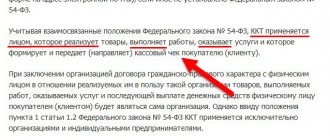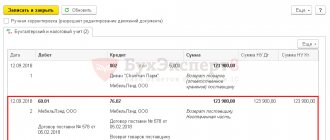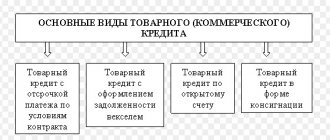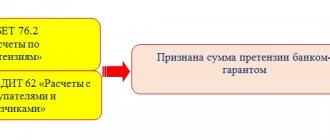The founders, along with the formation of the authorized capital (AC), can provide their own organization with financial assistance. The contribution is made to increase the enterprise's funds, to create reserve and additional capital, or to cover losses incurred in the course of business. Documentation of the operation is a prerequisite. In the article we will tell you how repayable financial assistance from the founder is carried out, and we will give examples of postings.
The actions of the founder must be based on the decision of the general meeting of founders. Compliance with a quorum is determined by the provisions of the Charter. The founder's intention to make a contribution must be approved by the majority of participants and reflected in the minutes of the general meeting. The sole participant must indicate the intention in the decision.
Types of founder contributions
There are several reasons why the owner of an enterprise can provide financial assistance as a founder or individual. To improve the economic condition of the enterprise or perform a one-time transaction, the founder makes several types of targeted contributions.
| Purpose of the contribution | Operation description |
| Contribution to increase the capital | Made on the basis of the decision of the founders with registration of changes in the Federal Tax Service |
| Contribution to increase net assets | Receipt does not increase the amount of the authorized capital |
| Transfer of funds to replenish reserve capital | Cash becomes the property of the enterprise, the founder has the right to receive dividends |
| Contribution in kind | Proceeds from the founder in the form of property are used to replenish additional capital |
| Providing a repayable loan | The contribution is formalized by an agreement with a repayment condition - indicating a limited period for using funds |
Funds transferred to the organization from the founder, provided they are properly executed, are not income of the enterprise. The transfer of funds to the enterprise is documented. In the absence of an agreement between the founder and the organization, income arises for a legal entity upon receipt of funds, and for an individual - upon return of funds or the equivalent of contributed property.
Documentation of donation of property
The provision of gratuitous financial assistance must be recorded in documents. The exception is cases of transfer of funds to non-profit organizations that do not pursue the goal of using the funds for business activities. In other cases, the company must have the following documents on hand:
- agreement with the party receiving financial assistance;
- copies of accounting registers on the acceptance by beneficiaries of amounts for accounting;
- confirmation of the intended use of the funds received.
The list contains the main papers that are necessary to formalize the act of charity. In some cases, additional documents may be required.
Contributions of the founder to the current account
The founder of the enterprise can replenish the current account with cash or by wire transfer. Replenishment of the current account with cash is carried out through the cash desk of the enterprise. The founder does not have the right to directly deposit cash into current accounts, except in cases stipulated by law. The cashier must:
- Accept funds on the basis of the PKO, indicating the details of the person, amount, and basis for the contribution.
- Attach a copy of the basis document to the cash order.
- Transfer funds to your current account. When depositing cash, the purpose of the payment is important. It is necessary to exclude the definition of a contribution as revenue.
Transfer of funds from the personal account of the founder is allowed. When making a non-cash transfer, the purpose of payment of the payment order must indicate the basis for the transfer, otherwise the receipt of funds can be treated as an advance on a taxable transaction.
Founder's contribution to open an account
A current account is opened after registration of the organization. At the time of opening the account, the company does not have funds received in the form of income. Payment of the bank commission is carried out at the expense of the founder. The best option to confirm the basis for the receipt of funds from the founder is a loan agreement. Funds are deposited through the company's cash desk.
The founder registered Yunost LLC. After opening, the company needed to open a bank account. The commission for opening an account was 500 rubles. Due to the lack of funds for current needs, a loan agreement was drawn up with the founder for the amount of the commission.
The following entries are made in accounting:
- The receipt of funds to the cash desk is taken into account: Dt 50 Kt 66 in the amount of 500 rubles;
- The deposit of the amount to the bank is reflected: Dt 51 Kt 50 in the amount of 500 rubles;
- The amount of the commission is taken into account as part of other expenses: Dt 91 Kt 51 in the amount of 500 rubles.
The loan is repaid from the cash desk or by bank transfer to the founder’s account.
Accounting with the borrower
Guided by clause 29 P(S)BO 13, the borrower is obliged to initially evaluate financial liabilities (loans) and record them at actual cost, which consists of fair value
liabilities (loan amount) and costs directly related to the acquisition of a financial instrument.
Similar to the situation described for the lender, the fair value of the loan received will be equal to the value of all future cash flows discounted at the market interest rate for a similar instrument. Cash flows associated with short-term accounts payable are not discounted if the effect of discounting is immaterial.
According to paragraph 31 of P(S)BO 13, for each reporting date subsequent after recognition, financial liabilities are measured at amortized cost
, except for financial liabilities intended for resale and liabilities on derivative financial instruments.
So, as we see, on the date of purchase of repayable assistance (loan), the borrower can also determine the current (fair) value of his obligation. The amount of the discount (the difference between the future and today's value of the obligation) is included in income at the time the loan is received and in expenses - in the process of amortizing such a discount over the life of the loan.
We will demonstrate the above rules with an example.
| Example | |||
| On January 1, 2014, the lender provided interest-free repayable financial assistance (loan) in the amount of UAH 1,000,000. for a period of 4 years, refundable at the end of the term. The average interest rate for similar loans is 20%. Let's calculate the current (today's) cost of the loan on the date of its recalculation: PV = 1,000,000 / (1 + 0.2)4 = 482,253.09 UAH. We will calculate the amortization of the discount over the entire period of using the loan. | |||
| date | Discount rate | Discount amortization | Book value |
| 01.01.2014 | — | — | 482 253,09 |
| 01.01.2015 | 20 % | 96 450,62 | 578 703,70 |
| 01.01.2016 | 20 % | 115 740,74 | 694 444,44 |
| 01.01.2017 | 20 % | 138 888,89 | 833 333,33 |
| 01.01.2018 | 20 % | 166 666,67 | 1 000 000,00 |
Contribution of the founder to increase the enterprise's NAV
Maintaining the level of net assets of the enterprise is a mandatory condition for conducting the company's activities. When the value of the net asset value decreases below the value of the capital company, risks arise that the Federal Tax Service will initiate the closure of the organization . The NAV value is an important indicator for assessing the balance sheet structure when receiving investments. The amount is increased from various sources, one of which is the founder’s contribution to increase the authorized capital or issued in the form of a repayable loan.
When concluding a loan, an agreement is drawn up between the company and the person. The transfer of the founder's funds for temporary use is carried out free of charge or with an indication of the interest received by the person as a result of the loan. If there is no information about the frequency of interest payments, payment will be transferred monthly.
| Increase in capital | Recording a transaction in accounting registers | Founder's contribution to increase the NAV | Transaction Record |
| The increase in the size of the authorized capital is reflected | Dt 75 Kt 80 | Cash inflow | Dt 50 (51) Kt 83 |
| Founder's contribution reflected | Dt 51 (50) Kt 75 | Receipt of contribution by property | Dt 10, 41, 08 Kt 83 |
Contributions of the founder to create a reserve fund
The creation of a reserve fund is carried out at the expense of retained earnings of organizations. Accounting for the funds of the fund is carried out in account 82. For joint-stock companies, the formation of a fund is a mandatory condition for conducting business. LLC creates reserve capital on a voluntary basis.
To replenish the reserve fund, financial assistance from the founder is sent to the other income account. Further, the net profit received at the end of the year will be used to form a reserve fund.
| the name of the operation | Recording a transaction in accounting registers |
| Reflection of receipt of assistance from the founder | Dt 50 (51) Kt 91/1 |
| Year end reflected | Dt 91/1 Kt 99 |
| Net profit reflected | Dt 99 Kt 84 |
| The formation of a reserve fund is reflected | Dt 84 Kt 82 |
The reserve fund funds are spent for the purposes specified in the Charter, including the payment of dividends to the founders in the absence of profit.
Postings when receiving gratuitous financial assistance from the founder
To reduce the risk of recognizing such assistance as taxable income, it is better to enter into an interest-bearing loan agreement. The founder who provided such a loan, provided he owns more than 50% of the authorized capital, can forgive the amount of accumulated interest without tax consequences (letter of the Federal Tax Service dated March 6, 2009 No. 3-2-06/32). Interest forgiveness will be reflected in the accounting records by posting Dt 66.3 (67.3) Kt 91.1.
Situation: There are three founders in the Krona company, the shares are divided equally between them. Founder No. 3 transferred on June 12, 2016. to the Company's account gratuitous assistance for payment of wages in the amount of 1.5 million rubles. "Krona" 06/15/2016 paid employees salaries in the amount of 1.305 million rubles, paid personal income tax in the amount of 0.195 million rubles.
All sorts of collisions happen in the life of an enterprise, so if it is necessary to pay off urgent payments or cover a loss, the founders can financially help the company. This is done by providing a loan, a property contribution (exclusively for an LLC), or a gratuitous transfer of funds or property. Let's figure out how these revenues are taken into account in the company's accounting.
Founder's contribution in kind
The founder has the right to contribute property to the ownership of the enterprise, provided that the possibility of contributing property is documented. State registration is not required for the operation of a contribution to property. The contribution is made subject to the following conditions:
- The ability to contribute property must be provided for by the main constituent document - the Charter.
- The decision to contribute an asset is made by the general meeting of founders with the consent of at least 2/3 of the votes.
- Approval of the transaction must be reflected in the minutes of the general meeting.
- The contribution of property does not affect the amount of the founder’s contribution to the management company.
The receipt of property is carried out at market value. To confirm the value of the property, you must order an independent appraisal. The transfer is made by deed. When conducting transactions with property, an important condition is the authenticity of documents and execution of the transfer. The asset is accounted for in account 83 as part of additional capital.
Providing free assistance to the founder with a share of less than 50% of the authorized capital
Along with paid assistance, founders can make gratuitous contributions. The transfer of property by the founder when he owns more than 50% shares in the management company is not taxed in accordance with the provisions of clause 11 of Art. 251 Tax Code of the Russian Federation. The status of the founder (legal or individual) does not matter.
Free assistance from the founder if he owns a 50% or smaller share in the management company is subject to income tax in accordance with clause 8 of Art. 250 Tax Code of the Russian Federation. The tax base is the market valuation of the transferred property.
Providing founder assistance for different tax systems
Help from the founder, as a result of which no taxable object arises, does not entail payment of tax, regardless of the chosen system. The provision of assistance with property does not become a taxable object if the objects are used to conduct business for more than a year (Article 251 of the Tax Code of the Russian Federation). When transferring property to a third party during a year of operation, the enterprise becomes subject to taxation under the income tax or single tax under the simplified tax system.
If the obligation to pay tax arises, the enterprise pays:
- Under OSNO – income tax.
- Under the simplified tax system and unified agricultural tax there is a single tax.
- For UTII - income tax or single tax, if the enterprise has declared the simplified tax system along with imputed income.
Contributions of funds in the form of a loan, additional capital, creation of a reserve fund, or property are not subject to VAT taxation. Contributions from the founders are not payments related to the sale and relate to investment activities.
Accounting with the creditor
According to paragraph 29 of P(S)BO 13, financial instruments are initially assessed and reflected at their actual cost, which consists of fair value
assets, liabilities or equity instruments provided or received in exchange for the corresponding financial instrument, and costs that are directly related to the acquisition or sale of the financial instrument (commissions, mandatory fees and payments when transferring securities, etc.).
Typically, the lender does not incur additional costs when providing repayable financial assistance.
At each subsequent reporting date after recognition, financial assets, with certain exceptions, are measured at their fair value (clause 30 P(S)BO 13).
What is the fair value of repayable financial assistance? Obviously, in this case, the amount of funds spent cannot serve as the basis for assessing the fair value of the loan. Since national standards do not answer these questions, let us turn to international ones.
According to paragraph B5.1.1 of Appendix B to IFRS 9 “Financial Instruments”, to estimate the fair value of a loan issued on non-market terms, it is necessary to discount all future cash receipts for this position at the prevailing market interest rate for a similar instrument with a similar credit rating. A similar instrument is a loan or loan that is similar in terms of terms, currency, type of interest rate, cash flow pattern, collateral and interest basis.
The fair value of the loan originated will be equal to the value of all future cash flows discounted at the market rate of interest for a similar instrument (similar in terms of currency, term, type of interest rate and other characteristics). The difference between the loan amount and its fair value is a cost.
At the same time, in the process of depreciation of a financial asset, financial income is recognized (clause 5.7.2 of IFRS 9).
According to paragraph K384 of Appendix B to IFRS 9, cash flows associated with short-term receivables are not discounted if the effect of discounting is immaterial.
Thus, if the repayable bailout is short-term (assuming it will be repaid within 12 months), the lender may not discount the cash flows.
If the repayable assistance is long-term, it is necessary to discount cash flows, charge the discount amount to expenses, and subsequently recognize financial income in the process of amortizing such a discount.
Discounting
– this is a reduction of the cost of future payments to the current value.
It reflects the economic fact that the amount of money available at the moment has a greater
value than an equal amount that will appear in the future.
The discounting operation for a one-time payment at the end of the term is reduced to the formula:
PV =
FV / (1 + i) n
, where
F.V.
– future value;
PV
– current value;
i
- discount rate;
n
– term (number of periods).
The fair value of the loan originated will be equal to the value of all future cash flows discounted at the market rate of interest for a similar instrument (similar in terms of currency, term, type of interest rate and other characteristics).








